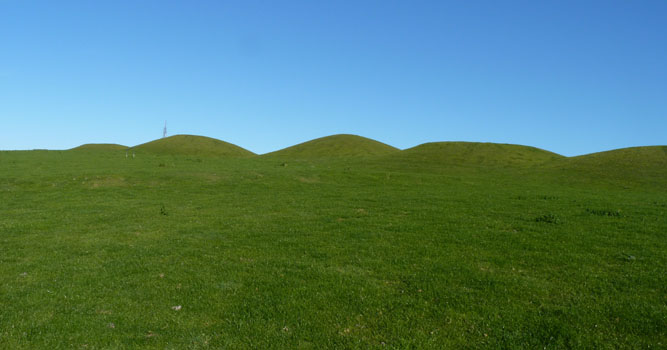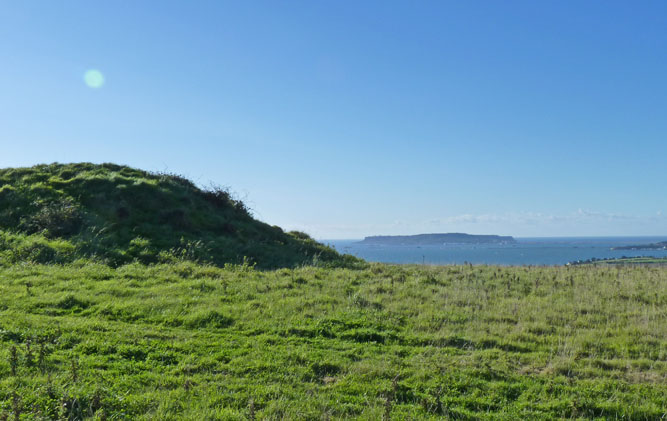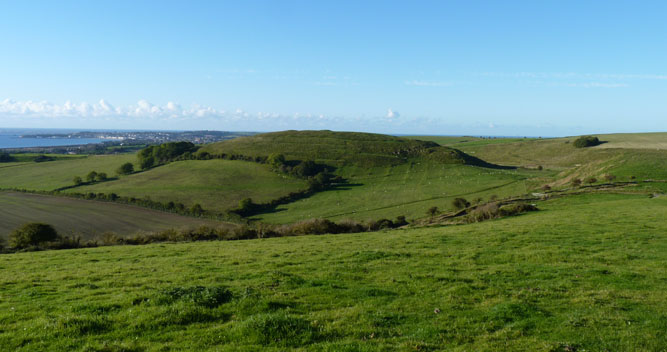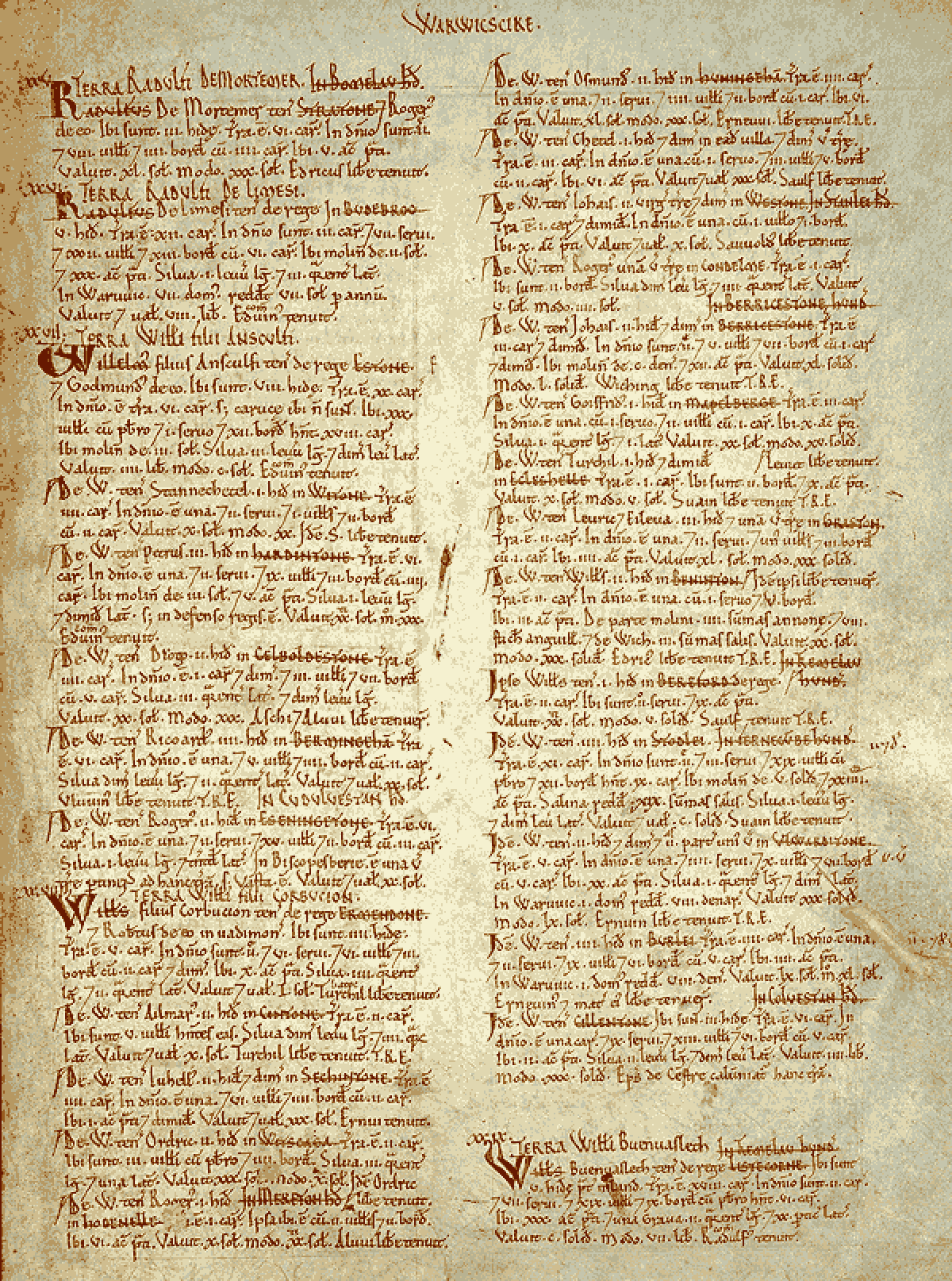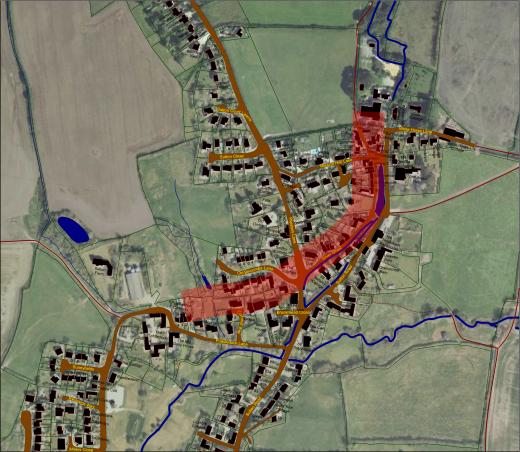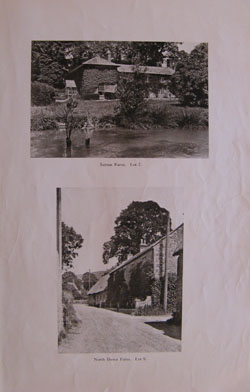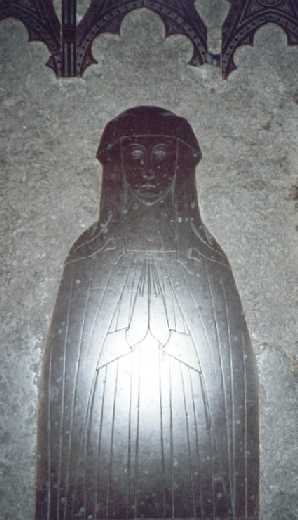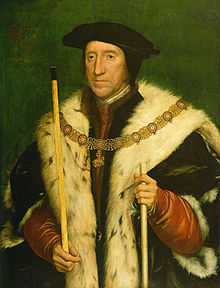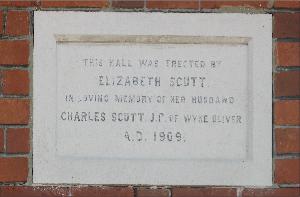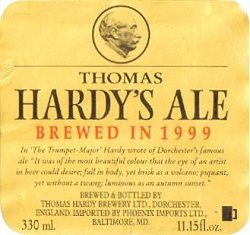The following pages summarise what the village's History Group has found out about the village's history, starting with its prehistory.
We start with six snapshot views of life in the village: Bronze/Iron Age, Roman and Saxon, Medieval (pre-Inclosure), post-Inclosure, after the 1925 Sale of the Manor, and after the closure of the last farming operation in the village. Further down, there is a summary of the families that have owned the Manor of Sutton Poyntz, followed by observations on the importance of water to the village economy. Towards the end, there are pages on businesses, the church, families living in the village, and some occasions when Sutton Poyntz hit the news.
Sutton Poyntz sits in a hugely important area of Neolithic and Bronze Age human occupation, the Dorset Ridgeway. The hills to the north of Sutton Poyntz have a number of round barrows, built around 4000 years ago, probably as burial sites. There is also one bank barrow and one long barrow that are rather older; the bank barrow may have been a boundary marker.
To the west of Sutton Poyntz, Chalbury Hill is one of the first hillforts in the area, built around 800BC (the visible fortifications of the nearby Maiden Castle are about 400 years later). Immediately to the south of Chalbury Hill is Rimbury, where evidence of a 3500 year old burial ground was found, one of the two type-sites of what has been termed the Deverel-Rimbury culture.
The things we see from these ages are just those things that last, and say little about real life then. Nevertheless, it seems reasonable to assume that life was lived then mainly up on the downs; at least early in this period, the valley that now contains the village and surrounding farm-land would have been forested and relatively inaccessible.
|
Bincombe Bumps, a cluster of round barrows |
Barrows
Sutton Poyntz sits just below the Dorset Ridgeway, near its eastern end. The Ridgeway is a line of hill escarpment running more or less east-west, close to the Dorset coast, and is one of the richest areas for ancient barrows and larger earthworks, evidence of a sophisticated and economically stable population from the Neolithic age through to the birth of the Iron Age. The earthworks along the Dorset Ridgeway cover a period of over 2000 years, culminating with the nearby Maiden Castle in the late pre-Roman era, and including three main periods:
- Long barrows and bank barrows, built in the Neolithic era between about 3200BC and 2600BC;
- Round barrows of various types, built mainly in the Bronze Age between about 2600BC and 1600BC;
- Hillforts, built after about 800BC.
|
Round barrow directly above Sutton Poyntz |
The hills immediately above Sutton Poyntz have a significant cluster of round barrows of several types, including ditched, bowl and pond barrows. One long barrow has been found, on Chalbury Hill but predating the hill fortifications by maybe two millennia. There is also one bank barrow at the crest of the hill, surrounded by yet another cluster of round barrows. The round barrows and long barrows were generally used for burials; the bank barrow's purpose is not clear, but may have been as a boundary marker. These earthworks are clear evidence of significant social units living in the area.
Chalbury Hillfort
|
Chalbury Hillfort, seen from above Sutton Poyntz |
Immediately to the west of Sutton Poyntz, an isolated hill stands as an outcrop of the Ridgeway. This is Chalbury hill, where one of the first hillforts in the area was built, in about 800BC. This hillfort predates the visible fortifications of Maiden Castle, although the eastern end of Maiden Castle had been protected by much older ditches.
Deverel-Rimbury
Not all the evidence of prehistoric occupation in the area is so obvious. Some time in the first half of the 19th Century, the farmers at the main farm in Sutton Poyntz sent some workers out to an area called Rimbury, to clear the fields for ploughing. Rimbury is a hill spur on the south-east corner of Chalbury, and had until then been used as sheep down, so had never been ploughed. As the workers cleared the stones from the ridge, they found that many of the stones covered chambers, each with a pot inside. They knew that another worker had once uncovered a hoard of Roman coins while ploughing a Sutton Poyntz field, so it is easy to imagine their excitement and anticipation, quickly dashed when it proved that the pots contained nothing other than bones and ash. In their frustration, they lined the pots up in the field, and used them for stone-throwing target practice, until the farmer (whose name is not given but was possibly one of the Scutt brothers) stopped them. A team of 'antiquarians' (as archaeologists were then known) came in to investigate, led by Charles Warne who later wrote up the excavation in his book "Celtic Tumuli of Dorset" - frustratingly, Mr Warne did not give a date for the excavation.
The "antiquarians" described what then was a newly discovered type of pottery, and a novel form of funeral using cremation, which is now known to date from about 1600-1100BC. In 1912, Lord Abercromby, in "The Bronze Age Pottery of Great Britain and Ireland", combined the results from this excavation at Rimbury with those of another excavation, at a tumulus called Deverel mid way between Milborne St Andrew and Winterborne Whitchurch (excavated in 1825 by W A Miles). Lord Abercromby named this culture Deverel-Rimbury; he dated it (erroneously) to about 700BC, and stated his belief (again erroneous) that it represented evidence of a local invasion from continental Europe.
Modern scholarship has demoted the significance of Deverel-Rimbury, which is now generally only used to describe the pottery type, since it is not thought to represent a distinct culture. Nevertheless, the term is still in quite common use.
Gradually during the late bronze age and early iron age, the valley would have been opened up for farming; one pre-Roman round house has been found in Sutton Poyntz. During the Roman occupation of Britain, there was a Roman villa on the River Jordan, just south of the main road through Preston (the site can be found on Ordnance Survey maps, but nothing is now visible). Another significant Roman site was the Temple on Jordan Hill, overlooking Weymouth Bay. The villa's domain presumably included the areas now occupied by Preston and Sutton Poyntz, and may roughly have matched the present parish boundaries. By this time, most of the forests would have been cleared, and the area would have been mainly agricultural. At this time there was probably no village as such at Sutton Poyntz, although various excavations have found evidence of small-scale industrial and agricultural activity.
After the end of the Romano-British era, there was no coherent evidence of occupation, but some time, perhaps in the 8th Century, a village was founded further up the river. It's not obvious why the local agricultural centre was at Sutton Poyntz rather than Preston - perhaps because there was a better site there for a water-mill. The first written evidence for the village was a Saxon charter dated 891AD, in which Sutton (meaning "South farm") was granted to King Alfred in exchange for land at Plush.
Sutton was still a Royal Manor after the Norman Conquest; Domesday Book (1086) has it as part of a group of Royal Manors with Dorchester, Fordingbridge, Gillingham and a couple of other small places. Probably, a King's Steward would have looked after the group of manors, collecting income on behalf of the king, while each individual place had a resident Bailiff to control activities of the villeins, freemen and serfs. The Domesday Book wording was as follows:
The King holds DORCHESTER, FORDINGTON, SUTTON [Poyntz], GILLINGHAM and `FROME'. King Edward held them.
It is not known how many hides are there because they did not pay tax before 1066.
Land for 56 ploughs. In lordship 7 ploughs; 20 slaves; 12 freedmen; 114 villagers and 89 smallholders who have 49 ploughs.
12 mills which pay £6 5s; meadow, 160 acres; pasture 2 leagues long and 1 wide; woodland 4 leagues long and 1 league wide. 5 cobs; 20 cattle; 72 pigs; 800 sheep; 40 goats.
This manor with its dependencies pays one night's revenue.
After the Domesday Book in 1086, Sutton and Preston disappear from the record for over 100 years, until 1212, when an Exchequer document (the 'Testa de Nevill') says that Nicholas Poyntz holds the manor of Sutton, with the Duke of Gloucester as the land-holder in chief. There appears to be no evidence at all about when the King gave away the manor. Kings were in the habit of rewarding good service to the crown (for example in battle) by the gift of land (remember that in Feudal England, the land was almost all owned by the King, and granted for a 'Fee' to the land-holder. The Fee was often in the form of military service, but could take many other forms). Kings were also in the habit of punishing poor behaviour by the withdrawal of land-holding rights. So some time between 1086 and 1212, the Manor of Sutton Poyntz was granted to someone, but we do not have any clear evidence of when or who. After 1212, the Manor of Sutton Poyntz was held by the Poyntz family, followed by the Bryens, the Newburghs (of Winfrith and East Lulworth), the Howards, and the Harveys. The Harveys sold it to the Welds in the 1790's, and the Welds sold the majority of the manor properties in 1925. More information is given below and in the pages on the Owners of Sutton Poyntz.
At the time of Domesday Book, and for a long time after, the whole of the village of Sutton sat close to the bank of the stream, roughly as shown shaded red in the following modern map.
A land survey carried out 1788, shortly before Inclosure, shows a farming pattern for much of the manor of Sutton Poyntz that was still basically medieval. The whole manor (Preston and Sutton Poyntz) was owned by a Lord of the Manor, who leased lands to a number of chief tenants.
There were by this time two farms (as we would recognise them) - Northdown Farm in Sutton Poyntz and Jordan Farm in Preston. There was common downland on the hills, used mainly for the grazing of sheep. But most of the rest of the land was divided into "Furlongs", mostly of 20-30 acres, each one subdivided into a number of units occupied by different people. Almost certainly the Furlongs would have been divided into strips, following an ancient pattern - the strips averaged about 0.7 acres; say 220 yards long by about 15 yards wide. Overall, the farming pattern was thoroughly mixed, with about one third being downland used mainly for sheep grazing, another one third being arable (crops and/or vegetables), and one sixth each of meadow and pasture. There were only a few orchards at that time. Economically, labourng families had some common rights to use land, as well as being employed to tend the areas held by the chief tenants. By this time, however, common rights had already been significantly eroded.
The parish of Preston-cum-Sutton Poyntz was Inclosed as a result of an Act of Parliament dated 1794. The Inclosure Commissioners report, and the Tithe Map dated 1838, show the dramatic effect this had on the landscape, generating substantially the countryside we see now. In place of the old open strips, enclosed fields were created to a pattern that is still clearly recognisable today. The main tenants still had the same amount of land in total, but far less scattered than it had been, and therefore much easier to farm efficiently. Sub-tenants - the bulk of the population - lost what common rights they still had.
The majority of the parish was now divided into five main farms. Northdown Farm, still existed, on the east and north-east side of Sutton Poyntz, probably mainly as a distinct diary-producing farm. Jordan Farm also pre-dated enclosure - this occupied the area west of the river Jordan between Preston Road and the sea. The new farms were Sutton Farm on the west side of Sutton Poyntz, Wyke Oliver Farm to the west of Preston Road, and Southdown Farm mainly in Lodmoor. The pattern varied slightly from time to time; for example Jordan Farm was amalgamated with Northdown Farm for a time in the 1840's, while in 1925 Northdown Farm had been divided into two farms, Northdown and Court Farms.
|
Page from the Weld Estate sale prospectus |
For its whole history up to 1925, the bulk of the Manor of Sutton Poyntz (which included the villages of Preston and Sutton Poyntz) was owned by a succession of Lords of the Manor - who these people were is dealt with below. In 1925, the Weld family at Lulworth Castle, who were then Lords of the Manor, decided to sell up the whole manor, in lots. This event was possibly the most significant in the whole history of the village. Most of the lots were bought by the sitting tenants. Several of these tenants then sold off parts of their new land-holdings for development. Thus began the expansion of the village out from its medieval core, mainly to the north-west (up Plaisters Lane) and to the south (along Sutton Road).
At this time, Sutton Poyntz was still very much an agricultural centre, based now on a mix of farming and market gardening. A survey in 1933 by Weymouth Borough Council, when they took over when Weymouth Rural District was disbanded, concluded that a large number of the agricultural workers' homes in the village were slums. There was no mains drainage until the 1950's - the Medical Health Officer commented against a planning application in 1945, saying that waste water arrangements were lacking, and the stream was already highly polluted. Sutton Poyntz was not then a rural 'idyll'.
But the expansion of the village that started after 1925 was the beginning of the "gentrification" of the village, that has completely changed its character, ending its close historical connection with agriculture.
In 1992, the Saunders family who had farmed Northdown Farm for almost 90 years sold up. They sold the farm land and buildings separately, and the farm buildings were redeveloped as housing. The land was bought by a Purbeck landowner. For the first time in its history, Preston and Sutton Poyntz had no working farms - all the land was farmed from outside the parish borders. Milling had stopped well before this. Thus ended, for the foreseeable future, any tie between the population of the parish and food production - in seventy years the economy of the village had changed completely, from mainly agricultural to wholly residential.
c1200-1366
Poyntz
Some time probably towards the end of the twelfth century, the King granted the manor of Sutton to the Poyntz family. There is no record of this event - the first record of Poyntz ownership is in 1212. As a result of its ownership by the Poyntz family, the village gradually took on the present name of Sutton Poyntz (although that spelling is quite recent). The Poyntz family seem to have descended from someone called Pons, two of whose sons were major landowners in the Domesday Book. Nothing is known about who Pons was, although it is reasonable to guess that he was Norman. It is believed that the Poyntz family who came to own Sutton Poyntz descended from a younger brother of the two Domesday Book landowners. This Poyntz family lived initially in Gloucestershire, and came (via a marriage into the Malet family) to the important lands and titles of Barons of Curry Malet (near Taunton). They will have lived in Gloucestershire and Somerset - Sutton Poyntz will have been, to them, a fairly unimportant and remote part of their domain.
From 1315 to 1361, Sutton Poyntz was held by a Poyntz widow, Maud, granted as dowry when she re-married after her first husband's death. Her step-son was the last Poyntz to own Sutton Poyntz; he died in 1375, with no sons, on which the title of Baron Poyntz of Curry Malet died out, and his properties were shared between his two daughters. Only one of his daughters had children of her own; this was Margaret, who had married a Dorset landowner, John Newburgh (more about the Newburgh's below). It seems however that the last Baron Poyntz had already sold Sutton Poyntz, to a very important person called Sir Guy de Bryan.
In passing, it is worth noting that another branch of the Poyntz family continued to live and thrive in Iron Acton, just north of Bristol, but they had no connection with Sutton Poyntz.
|
Lady Alice de Bryan |
1366-1461
Bryan
Sir Guy de Bryan bought the manor of Sutton Poyntz from the last Baron Poyntz in 1366. The Bryan family were landowners from Torbryan in Devon, and confusingly almost all seem to have had the Christian name Guy. They were prominent soldiers, and also held land in South Wales. Sir Guy became an extremely influential adviser to King Edward III and then to King Richard II. He was Steward and then Lord Chamberlain to the King, acted as Ambassador on a mission to the Pope, and was Admiral of the Fleet. He gradually increased his land-holdings, including Sutton Poyntz, Hazelbury Bryan and Puncknowle in Dorset, and had homes in Dorset at Woodsford Castle and Rampisham.
This Sir Guy married twice, and had five children: two daughters and three sons. However, two of the sons died without children of their own, as did the two daughters. Sir Guy's oldest son, however, married and had two children, both daughters.
This oldest son was also called Guy. Guy the younger married a lady from Suffolk, Alice de Bures (hence also known as Alice de Bryan) who was a significant landowner in her own right. Guy the younger, Alice's husband, died before his father, but their two daughters became co-heirs to their grandfather Sir Guy. Alice acted as guardian to her two daughters, and hence for a time as effective owner of the Bryan estates. However she seems to have owned Sutton Poyntz in her own right, as a result of an agreement with Sir Guy.
Alice lived on for 45 years after her husband's death, but unusually (for the time) did not remarry (the King would normally have arranged a second marriage). On her death, her properties, including Sutton Poyntz, passed to her surviving daughter Elizabeth (the other daughter had died without children). Elizabeth in turn had no sons - just one daughter Maud. Maud married twice, and had a son by her second husband; her son Humphrey FitzAlan succeeded his father as Earl of Arundel at the tender age of 6, but then sady died just 3 years later.
The next owner of Sutton Poyntz was Humphrey's half-sister, Amicia Stafford. Amicia married James Butler, Earl of Ormond. She died in 1456 without children, and so, a little later, did James (beheaded after fighting on the wrong side at one of the Wars of the Roses battles). Amicia was the very last direct direct descendant of Sir Guy de Bryan who had bought the manor of Sutton Poyntz.
1461-1526
Newburgh
Now comes a curious turn in the history of Sutton Poyntz, whose meaning we still do not quite understand. In 1447, about ten years before Amicia's death, a Court of Arbitration sat and passed judgement on the ownership of Sutton Poyntz. Their judgement was that the manor belonged to Amicia and her descendants, or in the absence of such descendants to James Earl of Ormond and his descendants, or in the absence of such descendants to John Newburgh, a Dorset landowner living at West Lulworth. It's not clear what claim John Newburgh had, but one possibility is that the sale to Sir Guy de Bryan in 1366 had been a transfer of title to him "and the heirs of his body" (i.e. his direct descendants), and someone had noticed that Amicia was the very last such direct descendant. And if the direct line died out, then just possibly the sale would be wiped out, and the manor would revert to the descendant of the last Baron Poyntz, who was John Newburgh, great grandson of the John Newburgh who had married Margaret Poyntz.
In any case, after the deaths of Amicia and then of James Butler in 1461, ownership of Sutton Poyntz clearly passed to the Newburgh family. The Newburgh's had lived in Dorset, at Winfrith and then Lulworth, since at least about 1150. Possibly (we think probably) they were descended from the Earls of Warwick (surnamed de Neubourg) and hence from a major Norman family called de Beaumont.
The Newburgh's held Sutton Poyntz as part of their Lulworth estates from 1461 until 1514, when John's grandson Sir Roger Newburgh died. He had only one child, a daughter, who married an Essex landowner called John Marney. They in turn had two daughters; Catherine, who married Thomas lord Poynings, and Elizabeth who married into one of the very greatest families in Tudor England, the Howards.
The Lulworth estates were divided between Catherine and Elizabeth - Sutton Poyntz was alloted to Catherine. Catherine had no children, and eventually Sutton Poyntz reverted to Elizabeth's side of the family.
1526-1647
Howard
|
Thomas Howard, 3rd Duke of Norfolk |
Elizabeth Marney, grand-daughter of Sir Roger Newburgh, married Thomas Howard, second son of Thomas Howard, 3rd Duke of Norfolk, (and younger brother of Henry Howard, Earl of Surrey, who was executed for treason in the last year of Henry VIII's life). Thomas Howard was uncle to two Queens of England, Anne Boleyn and Katherine Howard. Elizabeth inherited half of the Newburgh's Lulworth estates, as well as half of the Marney land in Essex. She and her husband settled in Dorset, and he was created Viscount Howard of Bindon. They had two sons, who succeeded in turn to the lands and title but seem to have made themselves fairly unpopular. They both died without heirs (legitimate, at least); their Dorset estates (now including Sutton Poyntz) passed in 1611 to a cousin, a grandson of Henry Howard.
This cousin, who was created 1st Earl of Suffolk, was one of the richest people in England, having also inherited huge estates from his mother. He built Audley End in Suffolk, which was the largest private house in England. He was Lord High Treasurer to King James I; however he seems to have confused his king's money with his own and was tried for embezzlement, after which his fortunes crashed to the merely lordly.
Ownership of Sutton Poyntz, as part of the Lulworth estate, passed to the son and grandson of the Earl of Suffolk. In 1641 the 3rd Earl sold the majority of the Lulworth estate to Humphrey Weld; however, for reasons that are not now known, Sutton Poyntz was not included and was sold later to a merchant called Eliab Harvey.
1647-1793
Harvey
Eliab Harvey was a London merchant, son of a merchant from Folkestone, and younger brother of Dr William Harvey, who was famous for first correctly describing the circulation of blood in the body. Eliab settled at Chigwell, in Essex; in 1647, he bought the manor of Sutton Poyntz from the 3rd Earl of Suffolk.
Six generations of Harveys owned Sutton Poyntz, between 1647 and about 1793, when it was sold, by another Eliab Harvey. This second Eliab was an Admiral, and at the Battle of Trafalgar captained the Temeraire (the "Fighting Temeraire" of Turner's painting). He was also an outrageous gambler, in an age of big gambling, and may have sold Sutton Poyntz to settle gambling debts.
1793-1925
Weld
Admiral Eliab Harvey sold Sutton Poyntz in c1793 to the Weld's of Lulworth Castle - Sutton Poyntz was thereby reunited with the rest of the Lulworth Estate, as it had been for most of the period 1461-1611.
Four generations of Weld's owned Sutton Poyntz, between the 1790's and 1925. In 1923, Reginald Weld died, aged 81, leaving the Lulworth Estate to his younger brother Humphrey (aged 69). This led to the inevitability of a double dose of Death Duties in quick succession. Parts of the Estate therefore had to be sold. Almost the whole of the manor of Sutton Poyntz (including the villages of Sutton Poyntz and Preston, and most of the farms around the two villages) was sold off in lots, mainly to sitting tenants.
Milling
The stream flowing out of the ridgeway just above Sutton Poyntz has always been a stable source of running water, and was almost certainly the reason for the location of the village. It once powered three separate mills for the grinding of corn. At the top end of Sutton Poyntz was the Upper Mill, later extended as a water pumping station for the supply of Weymouth (see below). The Mill House, now used as Waterworks offices, is an attractive 18th Century building, and may have been used as the model for the frontispiece illustration in the First Edition of Hardy's Trumpet Major. Signs of the header pond and watercourse for this mill are still just visible.
In the centre of Sutton Poyntz still stands Sutton Mill and the associated Mill House; the first an imposing 3-storey brick building dating from around 1815 and the latter an attractive stone house, built just a little later. The village duck-pond was the header pond for this mill; the mill continued to operate until after the 2nd World War, and most of the machinery is still in situ.
One other mill operated further downstream, near the Bridge Inn in Preston. This mill closed down in the 1890's, but the Mill house still exists, just behind The Bridge.
From the documents we have found, it appears that one of the mills is ancient, but it is not obvious which. The earliest clear reference that we have found to a mill is dated 1273; slightly later in 1435, at the death of Alice de Bures (see above), the manor of Sutton Poyntz is stated to have a watermill for grain (the description says it had a house and 10 acres, which could fit the Upper Mill or Preston Mill), and an out-of-use fulling mill. Several 18th Century Harvey family documents refer to mills in Sutton Poyntz; the first, dated 1750 states that the manor has one watermill, but a later one dated 1780 gives it 3 mills.The Harvey estate survey of 1788 refers to both Sutton Poyntz mills, but Preston Mill is not referred to explicitly until the Weld family commissioned a survey about 10 years later. From these sources, we tentatively conclude that Upper Mill in Sutton Poyntz dates back to at least the 13th Century, at least one other medieval mill was used from time to time, but that Sutton Mill and Preston Mill only existed continuously from the mid-18th Century.
The last operational mill, Sutton Mill, closed down in about 1960.
Water extraction
In 1855, the Upper Mill in Sutton Poyntz was sold to the Weymouth Waterworks Company, who installed pumping equipment to supply water to the town of Weymouth. Water had already been supplied to Weymouth from within the parish, from a spot known as Boiling Rock, but this new installation gave a larger and more secure supply. Among the equipment installed at that time was a funnel from SS Great Eastern (one of Brunel's ships), which was (until very recently) used for filtration.
Guarantees were given by Weymouth Waterworks for the continued volume of water in the stream flowing through the village. As a result, the site has one of the longest continuous records in existence of water flow.
There are now no shops in Sutton Poyntz, but old censuses and Trade Directories show the variety of shops and trades that were available within the village. For example, in the 1881 Census, the village had a grocer, a baker, a carpenter, a thatcher, a blacksmith, several dressmakers, a glovemaker, and a shoemaker.
There is now a single pub, the Springhead, which started life in the 1890's as a Hotel. Before that, the village had other pubs; the Butcher's Arms (sometimes known as the Three Horseshoes) nearly opposite the entrance to Puddledock Lane, and the Spring Bottom Pub, which could have been what is now known as Fox Cottage. Preston had two pubs, the Ship (now called the Spice Ship) and the Swan (now called the Bridge).
Sutton Poyntz has always been part of Preston-cum-Sutton Poyntz parish, with the main church at Preston ("priest's town"). St Andrew's Church is essentially a pretty but unpretentious 14th Century Perpendicular church, although there are traces of earlier structure, and the church was significantly restored in 1888. The church thrives as a community, but the building itself has not been enhanced by being surrounded by a caravan site.
At one time there was a chapel in Sutton Poyntz. We know of its existence from documents, particularly three 15th Century documents. It seems to have fallen out of use quite quickly, and disappeared well before 1650. Unfortunately, although we know from documents that it existed, there is no solid evidence of its location, although a building of the right age and form has been excavated near the Upper Mill site.
Several farm labouring families seem to have lived and worked in Preston and Sutton Poyntz for many generations, appearing in all the censuses available, parish registers, tithe apportionments, surveys etc. etc. Although families' ties to the soil have all but disappeared, many of these families can still be found in the locality. Some of the names that crop up again and again are: Willshire (a Willshire had found a horde of coins here some time in the early 19th Century); Puckett (numerically the largest family in the village for most of the 19th Century; two were innkeepers at the Spring Bottom Pub); Burt (a common Dorset name, one was innkeeper at the Butcher's Arms); Miller; Galpin; Thorne; Squibb.
|
Plaque on the Scutt Memorial Hall |
Scutt
Three Scutts arrived to farm in Preston and Sutton Poyntz in about 1829. They were, we believe, sons of a farmer in Affpuddle, John Scutt. Two of the brothers, Robert and Thomas, farmed at Sutton Farm until their partnership ended in 1849. Robert continued to live in Sutton Poyntz until his death in the 1870's; his son Robert was a miller for a short time, and lived in Preston until some time in the 1880's. (N.B. Another Robert Scutt, shown in the 1841 Census as a dairyman, was probably not closely related).
The third brother John farmed Jordan Farm from 1829 until his death in the early 1870's. John passed the tenancy of Jordan Farm on to his son Charles, who later moved to Wyke Oliver Farm. Charles died in or shortly before 1909; his wife Elizabeth erected the Scutt Memorial Hall, which is owned and used by the Scouting organisations. Charles's son Edward Angus continued to farm at Jordan Farm for some time afterwards, at least to 1925.
|
Thomas Hardy Ale, brewed by Eldridge Pope |
Pope
After Robert and Thomas Scutt stopped farming in 1849, a farmer called John Allen Pope moved from Clifton Maybank in north Dorset to farm at Sutton Farm. He was originally from Toller Porcorum, but had moved to Clifton Maybank in 1837. For a time, he farmed most of the manor of Sutton Poyntz, a massive total of 1950 acres; the farm was divided in about 1867 between himself and one of his sons, Henry, who farmed Northdown Farm. After John's death in 1875 another son, Thomas, took over for a short time at Sutton Farm. Later another Pope, Bernard, took over for a short time; he was a grandson of John Allen Pope's younger brother Thomas.
John Allen Pope had 7 sons and 4 daughters. The two most significant of these siblings were Alfred and Edwin. They did not take up farming, but in 1870 bought into a Dorchester brewery, then called Eldridge, Mason & Co, but quickly renamed as Eldridge Pope. In 1879 they bought and developed the brewery site next to Dorchester South station, and rapidly developed the business. A third brother, George, joined the business (now floated as Eldridge Pope & Co Ltd) in 1899.
Some time (we believe during the Pope family's time at Sutton Farm), the farmhouse was considerably 'gentrified', with a lake built in the garden. To enable this, Puddledock Lane was re-routed - originally it went to the north of the farmhouse (so that it came out into the village more or less opposite the entrance to Silver Street). Since, Puddledock Lane has passed between the farmhouse and the stream; this has drastically altered the simple cross-roads shape that the village originally had. The farmhouse seems to have been called "The Elms" for a time, but this name has disappeared.
Saunders
Henry Pope farmed at Northdown Farm for a time, roughly from 1867 to 1885; he then (we think - frustratingly the evidence from Censuses and Directories is patchy) replaced his brother Thomas at Sutton Farm. After him, Northdown Farm was farmed by William Keynes for a time, and then William Macey. Some time around 1905, Leonard Saunders arrived to farm at Northdown. He was originally from Marchwood near Southampton, but had farmed at Hardington in Somerset and then at Wynford Eagle. Leonard died quite young, in about 1915, but the farm continued to be farmed by his widow Harriett and their children. In 1925 the Saunders family took the opportunity of buying their farm from the Weld Estate, along with the farm labourers' cottages by the pond. Eventually the farm was taken over by one of Leonard and Harriett's sons, Ernest.
Ernest had twin sons, Derek and David, and a daughter Elizabeth. They continued to farm Northdown until 1992, when Ernest died and the family decided to sell up. David and Elizabeth continued to live in the village - David has given us some family reminiscences. As we have noted above, this farm sale ended all ties between the people of Sutton Poyntz and food production.
Harrison
The 1861 Census shows a Harrison family at East Coker, near Yeovil; Thomas Harrison, a carpenter, his wife and 6 children, all born at East Coker. By 1871, their 17 year-old son, William, had moved to Weymouth and was living with his aunt and apprenticed as a carpenter to his uncle, John Player. William met and married a girl from Preston, Jemima (almost certainly Jemima Jael Butler, daughter of Henry and Ann Butler, and grand-daughter of William and Eliza Fancy, bakers and shopkeepers in Preston. William Harrison moved to Preston, and William and Jemima then moved to Sutton Poyntz where he set up a joinery and wheelwright business.
William and Jemima had 5 sons, William, Edward, Frederick, Walter and Herbert, and 2 daughters, Emily and Elizabeth. During the 1st World War, it is said that two of the sons, including Walter, went to Braintree in Essex, to work at the Crittall Windows factory which had been converted to a munitions factory. Apparently Walter and one of his brothers both married girls from Essex, but we don't know if this was coincidence. Walter and Herbert stayed in the village, doing carpentry and also some house building. Walter's son, John, and a cousin Joan both lived in Sutton Poyntz until very recently, but they have both sadly died, leaving John's widow as the only Harrison in the village.
Murder most foul
Sutton Poyntz has not often got itself noticed by the London press, but an exception happened in 1862. The local Doctor employed by the Poor Union, Dr Adam Puckett, was called to house just next to the Butcher's Arms in Sutton Poyntz, to tend to a young man called John Cox, the son of paupers who had moved from Puddletown. The young man had had mental health problems but had never until now seemed violent. However he took exception to the doctor, and killed him. He then proceeded to dismember the body, and to lob body parts over the hedge into the lane outside.
John Cox was tried, but was found criminally insane under fairly new legislation, and was sent to Broadmoor as one of its very first patients. He lived there, apparently peaceably, until his death in the 1920's.

